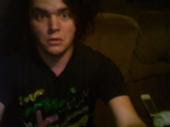Response 5
Ken O’Connell
I found the internet visit with Ken O’Conell an inspiring break from our class routine. O’Connell’s perspective as a Professor who at University of Oregon is very interestin to me because he has been involved with teaching experimental animation since there was a program for it back in the 1980s. He was able to offer us a number of clips of students’ work from the old program, which gave me some insight as to what the format was like back when the program existed. Before having seen these clips, I only new of the program’s brief existence by rumor. Part of me wonders if I would have ended up in that program, instead of multimedia/digital art, had the opportunity lingered through my years at University of Oregon. I often struggle with finding strength as I attempt to ride the fine line between art and design that this program strives so hard to blur. My work with film goes very much against design philosophy, existing as personal reflections on experiential bursts of impulsive camera work and experiments in esthetics/rather than function. However, my work in sound accompanyment to film, intends to act as an emphasis on the implied rhythym that physical projections of film strips already bear. In other words, my work with sound seeks to embody experimentalism as well as functionality. I admire O’Connell’s work with the three dimensional time based work he presented. I feel that it is parallel, in may ways, to the state that electronic music was in during a short period of the early 1980s. As Max MSP began to be designed, many artists sought to create applications that were intuitive to time based note sequencing and simultaneous manipulations thereof. As a result of the genre’s wholly embryonic state, much of the work appears esthetically awkward and conceptualy relient on experimentalism as a challenge agaisnt the restraints of technology. I feel that today, technology has come to a point where the intuition involvd in most software has surpassed the general artist’s aspiration for means of design. Instead, designers are concerned with accomodating the preset filters and functions that software presents them with, and the challenge to experiment as a means of achieving a desired outcome is unfortunately and ironically considered superfluous.
Subscribe to:
Post Comments (Atom)


No comments:
Post a Comment